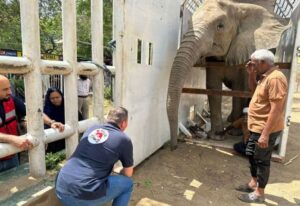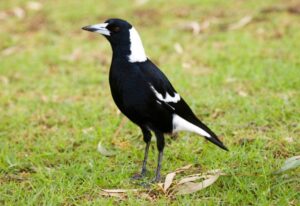Can Pet Birds Be Trained to Live Without a Cage and Not Fly Away? Discover 5 Powerful Techniques!
One of the greatest joys of owning a pet bird is witnessing their majestic flights as they soar through the sky. However, as bird owners, we often find ourselves torn between our desire to let our feathered companions experience the freedom of flight and the need to keep them safe and protected. It’s a dilemma that tugs at our hearts.
But here’s the good news: there are ways to train pet birds to live cage-free without the constant worry of them flying away. While not all breeds may be suitable for a life outside the confines of a cage, some can indeed enjoy the freedom of being out during the day.
In this article, we will explore the possibilities and unveil five powerful techniques that can help you create a harmonious environment where your pet bird can thrive without the need for a cage. It’s important to note that while the idea of cage-free living is enticing, it is crucial to provide your bird with a secure and comfortable home that meets their needs.
So, if you’ve ever wondered if your beloved pet bird can be trained to live cage-free and not fly away, keep reading as we delve into the fascinating world of avian training techniques. Get ready to unlock the secrets and forge an even deeper bond with your feathered friend!
Table of Contents
Embrace Freedom: Unleashing the Wings of Cage-Free Living!
Imagine the feeling of confinement, being stripped of your ability to fly freely through the open skies. This is the unfortunate reality for many pet birds confined to cages. These magnificent creatures, born to soar high above the treetops, find themselves trapped behind wire bars, isolated and devoid of their natural freedoms.
But there is hope. Not all bird species must endure a life of captivity. By carefully selecting a bird species that can roam freely within a safe environment, you can provide them with a life that allows for natural exploration and strengthens the bond you share.
A cage should be more than a prison; it should serve as a sanctuary, a place where your feathered companion can find solace and peace, rather than a symbol of restraint. By embracing the idea of cage-free living, you open up a world of possibilities for both you and your pet bird.
In this article, we will explore the concept of training pet birds to live without a cage and not fly away. We will delve into five powerful techniques that can transform your bird’s life, enabling them to experience a sense of freedom while maintaining their safety.
Say goodbye to the confines of traditional bird cages and embark on a journey towards a harmonious coexistence with your avian friend. Get ready to discover the secrets that will revolutionize your bird’s life and deepen your bond like never before. Together, let’s unlock the path to a cage-free paradise for your beloved pet bird!

Free-ranging vs. Caged Bird Species: Finding the Perfect Match for Cage-Free Living!
The world of avian enthusiasts is as diverse as the array of bird species that grace our planet. Each bird lover has their own preferences when it comes to the feathered companions they welcome into their homes. While the following list is by no means exhaustive, it provides a general idea of which birds are more compatible with cage-free living.
Bird species such as Macaws, Cockatoos, African Greys, and Cockatiels are among those that can thrive outside of their enclosures. These majestic birds possess the qualities necessary for a safe and enjoyable cage-free lifestyle. However, it’s important to note that not all birds are suited for such freedom.
On the other hand, certain species, including Finches, Doves, Canaries, and Budgies, are better off in their enclosures. These birds are small, flighty, and prone to injury. Catching them, even with clipped wings, can be a challenge, making it difficult to ensure their safety in an unrestricted environment.
When considering whether to pursue cage-free living for your bird, it’s crucial to choose a species that aligns with their natural instincts and needs. By selecting the right match, you can create a harmonious environment where your bird can thrive and explore while minimizing the risks associated with unrestricted freedom.
Stay tuned as we unveil the secrets to a fulfilling, cage-free life for you and your feathered friend!
Nighttime Enclosure: A Haven for Free-Roaming Birds!
For pet owners who choose to allow larger birds, such as parrots, to freely roam their homes, it is essential to provide a nighttime enclosure. Even though these birds may enjoy the freedom of exploration during the day, it is in their nature to seek refuge and rest during the night hours.
When the sun sets and darkness engulfs the surroundings, all diurnal birds instinctively long for a safe and secure place to settle. By providing a designated enclosure for your feathered friends to sleep in, you not only meet their natural needs but also ensure their safety and well-being.
During the day, while your birds are out and about, perching and exploring as they please, it can be a delightful experience for both you and your avian companions. However, it is vital to implement proper safety precautions to prevent accidents or mishaps.
Creating a bird-friendly environment involves removing potential hazards, securing windows and doors, and carefully supervising their interactions with other pets or household objects. By taking these precautions, you can offer a safe haven for your birds to exercise their natural behaviors and enjoy their newfound freedom.
Watchful Eyes: Safeguarding Your Free-Roaming Birds from Hazards!
When allowing your bird to roam freely, ensuring their safety becomes of utmost importance. Birds, with their flitting movements, may unwittingly find themselves in precarious situations. However, a little proactive bird-proofing can go a long way in keeping them out of harm’s way.
- Fans pose a significant hazard to pet birds. Even a fan on low setting can cause severe damage due to their delicate nature. Any entanglement can result in broken wings or worse. Open doorways also present a danger, as it takes mere seconds for your bird to glide out unnoticed. It is vital to communicate to all household members whenever the bird is out of its enclosure to prevent accidents.
- Careless entry and exit can also lead to severe injuries for your bird. Members of the household must remain vigilant to avoid situations where the bird gets caught in doors, potentially causing broken limbs or even more gruesome injuries.
- Open windows, especially in older houses without sturdy screens, can pose flight risks. It is crucial to ensure that proper screens are in place to prevent your bird from escaping or encountering potential dangers outside.
- Hot stoves demand special attention. Whenever your bird is in the room while cooking, make sure the stove is completely cool. Even slightly warm temperatures can harm their delicate claws.
By being aware of these safety hazards and taking proactive measures, you can create a secure environment for your free-roaming birds. Stay tuned to discover the secrets of fostering a safe and enjoyable environment where your birds can thrive!
Be Mindful of Overexertion: Preserving Your Bird's Well-Being
Flight can be a source of panic for birds, particularly smaller species, when confined within the boundaries of a home. The limited space and absence of open flight paths can cause them to become frantic and overwhelmed. In their desperate fluttering, birds can exhaust themselves to the point of severe harm or even death due to overexertion.
To ensure the well-being of your feathered friend, it is vital to maintain peaceful and calm interactions at all times. Creating a tranquil environment will help your bird feel comfortable and reduce the likelihood of panic-induced flight episodes.
By fostering an atmosphere of serenity and minimizing stressors, you provide your bird with the assurance they need to navigate their surroundings without feeling overwhelmed. This includes avoiding sudden movements, loud noises, or any other factors that may trigger anxiety.
These methods prioritize a calm and positive approach to ensure your bird’s safety and contentment. Stay tuned as we reveal the secrets to establishing a harmonious bond and enabling your bird to thrive in their cage-free lifestyle!
Alternate Options for Birds: DIY Aviaries for Limitless Flight
For creative bird owners with the necessary resources, there is an exciting alternative to traditional cage living. If the weather in your area permits, you can consider constructing an aviary that allows your bird to fly freely while still being protected.
The possibilities for DIY aviaries are endless, and Pinterest offers a plethora of ideas to suit your preferences. Whether you’re looking for technical, fancy, or creative designs, there are both indoor and outdoor options available. You can explore a range of premade alternatives as well. Building an aviary provides an opportunity to craft a customized space where your bird can stretch its wings and enjoy the freedom of flight within a secure enclosure.
If you’re seeking a more expansive and stimulating environment for your feathered companion, investing time and effort in constructing an aviary could be worth considering. Not only will it allow your bird to experience the joys of unrestricted flight, but it will also contribute to their overall well-being and happiness.
Whether you opt for an aviary or another method, these techniques will help you establish a strong bond and provide an enriching environment for your beloved bird.
Conclusion
"Unlock the secret to harmonious living with your pet birds as you discover powerful techniques to train them to live cage-free, fostering a deeper bond and providing a safe environment where they can freely spread their wings."
Dr. Chandrika Tweet
In conclusion, the desire to allow pet birds to live cage-free and prevent them from flying away is a common concern among bird owners. While not all bird species are suitable for unrestricted living, there are options to enhance their quality of life and strengthen the bond between bird and owner. By implementing five powerful techniques, you can embark on a journey towards training your pet birds to live without a cage.
It is crucial to choose compatible bird species that can thrive in a cage-free environment. Larger birds like Macaws, Cockatoos, African Greys, and Cockatiels are among those that can enjoy the freedom of being outside their enclosures. However, safety precautions should be in place, such as providing a nighttime enclosure, bird-proofing the surroundings, and being mindful of potential hazards like fans, open doorways, and hot stoves.
For those who have the resources and creativity, building an aviary can be an exciting alternative. DIY aviaries offer a protected space where birds can freely fly while still being safeguarded. Pinterest provides a wealth of ideas and inspiration for constructing personalized aviaries.
By following these techniques, creating a peaceful and calm environment, and being attentive to your bird’s needs, you can foster a harmonious and secure atmosphere where your pet birds can thrive without the confines of a cage.
So, unleash the wings of cage-free living, nurture the bond with your feathered friends, and embark on a journey towards a fulfilling and enriching life for both you and your beloved pet birds.

Hope for lonely elephant Madhubala to be relocated in Pakistan
Elephant Madhubala, credit score: 4 Paws The 19-year-old African elephant Madhubala has been dwelling alone at Karachi Zoo in Pakistan

20,000 pigs killed after fireplace at pig manufacturing facility in Germany
A devastating fireplace at a big pig fattening manufacturing facility in Germany killed 20,000 pigs. The hearth began late Friday

One-year-old humpback whale dies from trauma in US waters
A younger male humpback whale has died on account of blunt pressure trauma, the Marine Mammal Stranding Heart (MMSC) mentioned.

Well-known magpie Molly and canine Peggy reunited
Molly, the magpie, and her canine companion Peggy reunited on Thursday, their in style Instagram account introduced. The 2 have

1000’s of monkeys used for testing transported by way of Iceland
Bluebird Nordic, an airline from Iceland, has been concerned within the controversial transport of 1000’s of monkeys. The long-tailed macaques

Elephant Miyako 50-Years of solitude in Japan
Miyako in her small enclosure at Utsunomiya Zoo, Japan, credit score: Elephants in Japan Miyako, a feminine elephant, has been


